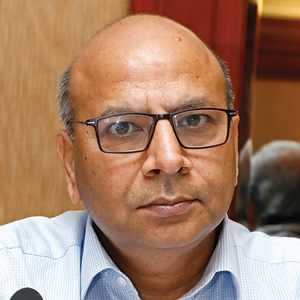Mr Amarendra Singh
Deputy Secretary, Ministry of Information and Broadcasting
Mr Amarendra Singh, Deputy Secretary, MIB, belongs to the Central Secretarial Service. He has worked in different Ministers like Commerce & Industry, Culture, and Home Affairs for about 30 years and presently working as Deputy Secretary in M/o I&B since 2017. While working in M/o I&B, has looked after matters relating to media units of CBC, RNI, PIB, PCI private broadcasting Digital Media etc. After the allocation of matters relating to content on the OTT Platforms and Digital news publisher to the Ministry of I&B in September 2020, has been looking after the newly created Digital media Division in the Ministry. While working in the Digital Media Division, he was associated with bringing out the Digital Media Ethics Code Rule, 2021.
